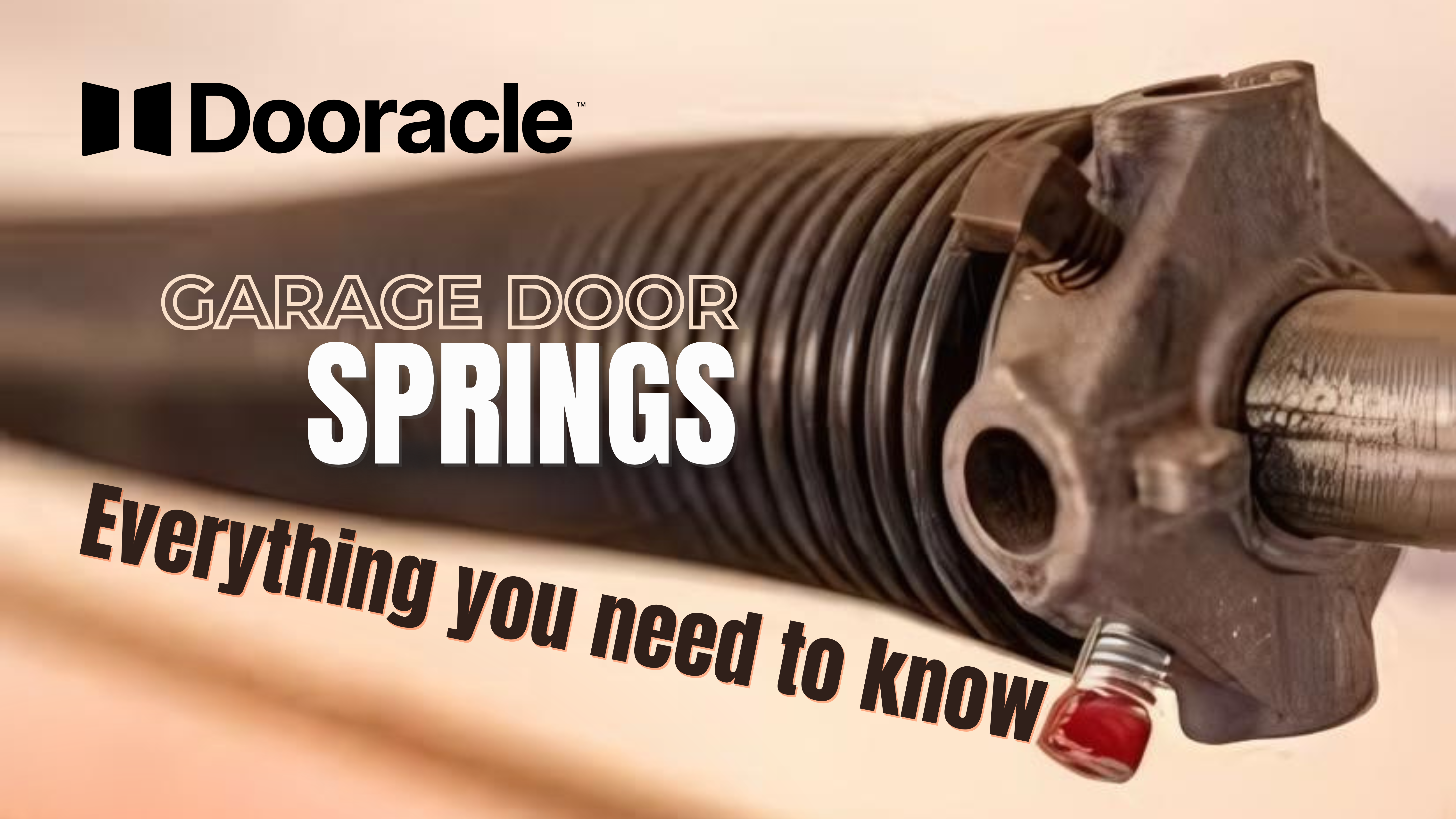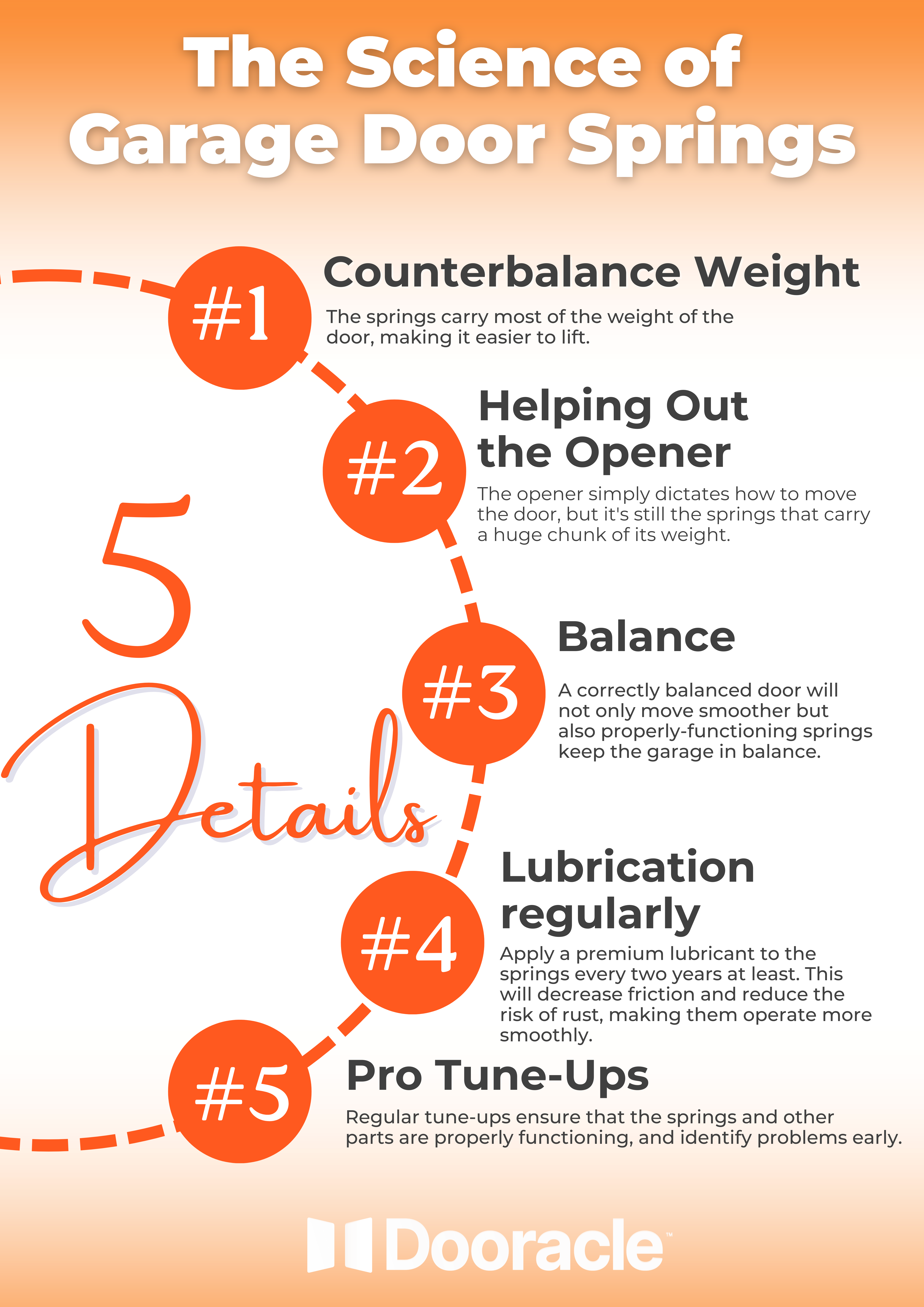Introduction
Garage door springs are some of the most vital parts in your garage door system because they typically go unnoticed while being behind-the-scenes. They support the door and allow it to be opened and closed with ease. The shape of these springs, what they do, and how to keep the garage door can significantly impact your doors’ lifespan.

1. Role of Springs in a Garage Door
Garage door springs act as counterbalances to the weight of a garage, making it easier for you or the opener (operator) to lift and lower by hand. When the door is closed it retains mechanical energy, which¦ you can imagine what it does when it lifts opening a huge heavyweight. The weight of the door is too heavy to be lifted without these springs.
Counterbalance Weight:
The springs carry most of the weight of the door, making it easier to lift
Helping Out the Opener:
The opener simply dictates how to move the door, but it's still the springs that carry a huge chunk of its weight
Balance:
A correctly balanced door will not only move smoother but also properly-functioning springs keep the garage in balance.
2. Types of Garage Door Springs
Most garage door systems utilize either torsion springs or extension springs, both of which have pros and cons regarding particular safety precautions.

Torsion Springs:
Torsion Springs: Torsion springs are mounted on the wall above your garage door — they torque to save energy and when you need them release them so that the door will lift. They are durable and work well enough to give 15-20k cycles. Looking for better features and fits The type of springs mentioned above allows the door to balance itself & guarantees against sudden breakage — so much safer, and more reliable

Extension Springs
The springs located alongside the door tracks are called Extension Springs they extend and contract as the door moves. While they tend to be more affordable and easier to install than torsion springs, their lifespan is much shorter lasting only 5,000 to 10,000 cycles. Extension springs can be noisy and tend to snap suddenly, representing dangers.
3. What Affects The Longevity Of Spring?
The Life Span of Your Garage Door Springs: The longevity or service life of your garage door springs is dependent on a few factors; which include usage, quality, environment, and maintenance level.
Cycle count
(i.e., how many times your garage door is opened and closed) directly affects your spring’s lifespan. Every time you open and close them, the springs lose a little of their life
Spring Quality:
Higher quality springs, made from stronger materials, will perform better over time and last longer under pressure— meaning you won’t have to replace your spring as often
Environmental Factors
Springs subjected to high and low temperatures, humidity, or corrosive conditions (coastal) may result in faster deterioration. The steel springs can rust and corrode, which
would cause them to break early.
Maintenance Practices:
If you regularly do maintenance which
includes lubricating the springs and conducting balance checks, your
springs could last longer. Proper care keeps corrosion at bay, improving the lifespan of your springs and easing some strain off
other components
4. Signs that a strap is bad
Knowing what the beginning signs of degradation are can save your garage door springs from total failure and you the hassle, not to mention safety hazards
Operates With Difficulty:
When your garage door becomes too heavy to lift or the opener struggles, that is a hint of tension lost in springs and must be looked at.
Unbalanced Door:
An unbalanced door might not stay where it is stopped at any point on its travel path. One of the signs that your torsion springs are worn out is when your garage door begins to fall or rise on its own
Look Between The Coils:
Look Between The Coils: Check for a gap in the coils, rust, and stretches. This is a sign that the springs are nearing their life span.
Operating too Loudly:
If your garage door creaks and whines during operation, there could be a problem with the springs as they are worn or not aligned properly.
5. How to Keep a Garage Door Springs Running for Years?
If you want your spring to last and perform its function, here is what can be done:-
Lubrication regularly:
Apply a premium lubricant to the springs every two years at least. This will decrease friction and reduce the risk of rust, making them operate more smoothly.
Test The Balance:
Close the garage door and then lower it halfway by releasing the opener. A well-balanced door should not move up or down and remain in place. If not it might be the case that spring adjustments are required.
Regular inspections:
Even in the absence of a wear-monitoring solution, frequent simple visual inspections can signpost things running amiss before these become worst-case scenarios. Search for rust, holes, or other damage
Pro Tune-Ups:
Regular tune-ups ensure that the springs and other parts are properly functioning, and identify problems early.
Conclusion
Springs, your garage door system is incomplete with this component as they are responsible for the smooth and safe operation of your garage door. By knowing how they work, keeping an eye out for wear and tear signs, as well maintaining them periodically. Expert Garage Door Spring Maintenance, Repair, or Replacement by Affordable Garage Door. They never want to see your garage door go down the tubes and we are wholehearted in keeping it operating correctly.

